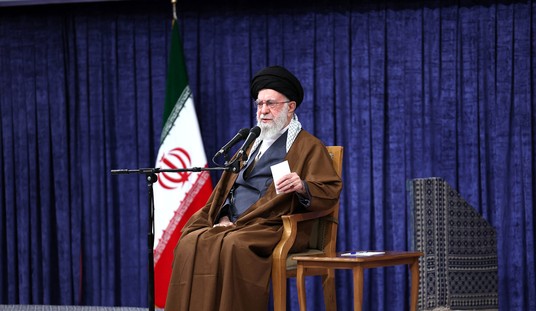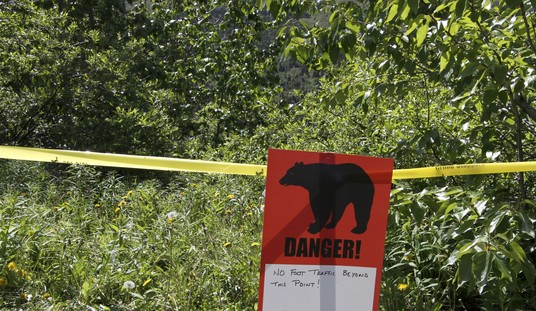At NRO, Lee Habeeb asks, “Why do we ignore murders of blacks by other blacks?”
Blacks are fleeing northern urban centers in record numbers, many of them heading back to the South in what has been called “the Great Return.” They are fleeing the crime and the awful schools and seeking opportunity and a better quality of life.
Between 2000 and 2010, an estimated 1,336,097 blacks moved to seven major southern cities alone, according to the Brookings Institute, which compiled the most recent data from the U.S. Census. Today, 57 percent of the country’s black population lives in the South, a 50-year high.
Young black males are killing one another in epic proportions, and blacks are moving in record numbers from cities like Chicago and Detroit, and the media just yawn.
That story doesn’t interest the mostly white editors and gatekeepers of the mainstream media, who presume such stories won’t draw ratings, especially from a white majority insulated from the problems of inner-city life.
And they may be right for making such assumptions.
This I know for sure: If hundreds of white kids were senselessly murdered by other white kids in high concentrations, the media would be all over it.
Chicago is Columbine every day.
And this situation, not just in Chicago, has existed under the blind eye of the MSM for decades. Recall that Daniel Moynihan wrote “Defining Deviancy Down” in 1993, where he noted:
Consider the St. Valentine’s Day Massacre. In 1929 in Chicago during Prohibition, four gangsters killed seven gangsters on February 14. The nation was shocked. The event became legend. It merits not one but two entries in the World Book Encyclopedia. I leave it to others to judge, but it would appear that the society in the 1920s was simply not willing to put up with this degree of deviancy. In the end, the Constitution was amended, and Prohibition, which lay behind so much gangster violence, ended.
In recent years, again in the context of illegal traffic in controlled substances, this form of murder has returned. But it has done so at a level that induces denial. James Q. Wilson comments that Los Angeles has the equivalent of a St. Valentine’s Day Massacre every weekend.
Speaking of black-on-black violence in L.A., that’s the topic of the LAPD’s Jack Dunphy, elsewhere at PJM. Dunphy writes:
From 1980 to 1993, Los Angeles averaged 895 murders per year, with the number topping 1,000 in four of those years. There are only so many minutes on a news program and so many pages in a newspaper; if reporters had devoted even a single sentence to each of those murders they would have had time or space for little else. By contrast, there were 298 murders in Los Angeles last year, still a disturbing figure but a far cry from the horrific days of the ‘80s and early ‘90s. But, as was the case in those troubled times, a disproportionate number of those murders occurred in the four police divisions that make up South and South-Central Los Angeles. Those four divisions are home to about 16 percent of the city’s population, but accounted for 45 percent of its murders. And that, of course, we are not allowed to talk about, lest we perpetuate a negative stereotype.
It is not just the media that deserves blame for such callous disregard for all that bloodshed. Politicians, too, twist themselves into all manner of intellectual contortions in attempting to minimize and even ignore the problem of crime in black communities. Many of the murders I mention above occurred in the congressional district represented by Maxine Waters, whose comments on the Trayvon Martin shooting have been characteristically foolish: “Why is it we have so many young black males that are being profiled and being killed?” she asked on CNN, blithely unaware of the incongruity in the question.
To Rep. Waters and her cohorts in the racial grievance industry, racial profiling is a greater threat to blacks in America than violent crime, this despite the stark numbers available for all to see. Her Los Angeles office is located near the intersection of 101st Street and Broadway, within two miles of which, according to the Los Angeles Times, there have been 236 homicides since January 1, 2007. In examining the map at the link, you’ll see that you can scarcely walk a single block in parts of that area without coming upon the scene of at least one murder. Wouldn’t the loved ones of those 236 people wish that some police officer had “profiled” the killers in the moments before the crimes occurred? Would Rep. Waters ask that the police in those neighborhoods be less proactive?
I was at some of those murder scenes. I was present in some cases when the parents of those victims came running to the sounds of sirens and police helicopters to learn that their worst fears had been realized, that it was their own son lying under a sheet on the sidewalk beyond all that yellow tape. I don’t remember Maxine Waters saying a word about any of them.
Why would she care about helping to solve a problem, rather than stoking racial grievances?
Related: “Quote of the Day: Narrative Destroying Edition.”
(Spotted via Hugh Hewitt.)










Join the conversation as a VIP Member